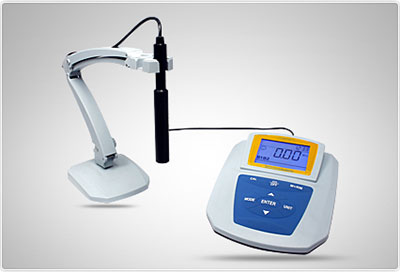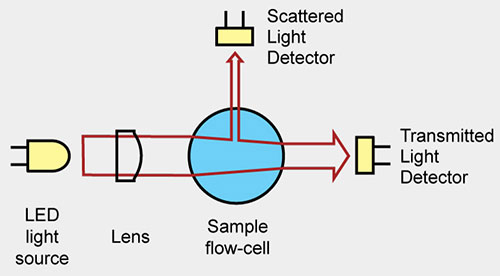Turbidity Meter: Basics and Working Principles
As people pay more and more attention to environmental quality, water quality testing becomes more and more important. In the field of water treatment, drinking water, wastewater treatment, etc., turbidity meter, as a key measuring instrument, is widely used in water quality monitoring and control. In this article, ATO store will introduce the concept, principle, characteristics, applications and other aspects, to bring you a deep understanding of this important water quality monitoring instrument.
Basics
A turbidimeter is an instrument based on optical measurement techniques to determine the turbidity of water by means of the scattering and absorption properties of light. It uses a beam of light, which is directed at a sample of water, and measures the degree to which the light is scattered or absorbed as it passes through the water to determine the turbidity value. The magnitude of the turbidity value is directly proportional to the amount of suspended and organic matter in the water and can therefore be used to reflect changes in water quality.
Component
- Turbidity sensor
The turbidity sensor is the core component of the turbidity meter, which can convert the turbidity in the water sample into an electrical signal output. Turbidity sensors typically consist of optical and electronic systems, including optical waveguides, light sources, probes, receivers, and signal converters. - Light sources
The light source is another important component of the turbidity meter, which can provide sufficient light to enable the sensor to work properly. The light source usually uses LED lamps, which have the characteristics of low power consumption, long lifespan, fast reaction speed, and can also generate light that meets the requirements of turbidity measurement. - Photoelectric converter
Photoelectric converters are used to convert the light signal received by sensors into electrical signals, typically using devices such as photodiodes or photomultipliers. These devices can convert the energy of light into current or voltage signals, thereby achieving the collection and processing of turbidity signals. - Processing units
The processing unit is the control center in the turbidity meter, which mainly includes A/D converters, signal amplifiers, microprocessors, and other parts, used for signal processing, data conversion, and data processing functions.
Working Principle
When the measured liquid passes through a throttling device and enters the sensor, a local vortex zone is formed under the action of the throttling device; At this point, the signal voltage decreases due to the obstruction effect of metal platinum on eddy currents. Therefore, the turbidity size and distribution of the measured liquid can be determined by detecting changes in output voltage.
Application
Water treatment industry: Turbidity meters can be used for monitoring the operating status of water treatment equipment, monitoring and controlling the concentration of suspended solids in processes such as reverse osmosis and ion exchange, which is improving water treatment efficiency and quality.
Drinking water industry: Turbidity meters can also be used for turbidity monitoring and control of water sources such as tap water, bottled water, and bottled water, ensuring the safety and quality of drinking water.
Wastewater treatment industry: Turbidity meters can be used for monitoring and controlling water quality indicators such as effluent, sludge, and reclaimed water in wastewater treatment plants, improving the efficiency and quality of wastewater treatment.
Environmental monitoring field: Turbidity meters can be used for turbidity monitoring and control in environmental samples such as water, soil, and air, improving the accuracy and reliability of environmental monitoring.
Advantages
There are a varies of advantages of portable turbidity meter and benchtop turbidity meter.
- 90 ° angle scattered light principle with built-in temperature sensor
- Supports RS-485, Modbus/RTU protocol
- Fiber optic structure with strong resistance to external light interference
- Infrared LED light source with high stability
- IP68 protection, water depth within 20 meters
- Convenient, fast, stable, and easy to maintain
In water quality monitoring and water treatment processes, turbidity meters are a commonly used detection method that can help monitor the quality of clean water resources and improve the efficiency of sewage treatment. With the continuous progress of technology, it is believed that the turbidity meter in water will have more extensive application prospects.

